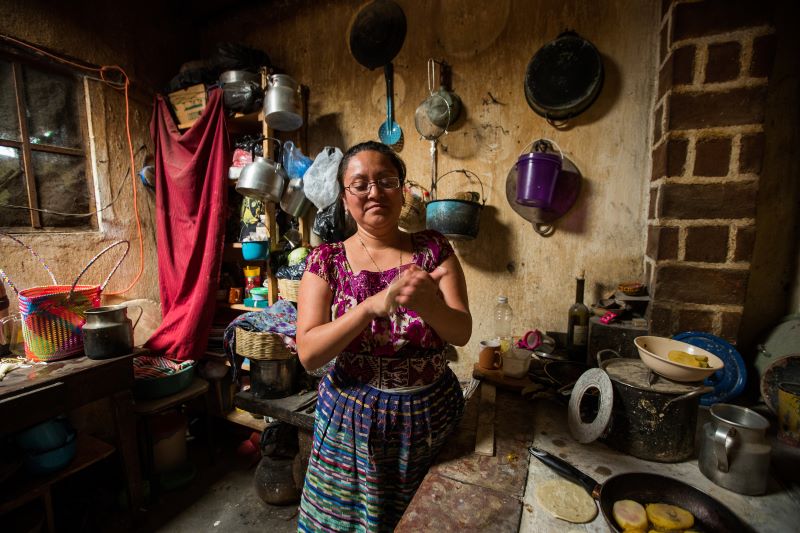Recommended
Men are the majority customers in bank lending portfolios throughout the world. The gender gap in access to credit is larger in developing countries and especially onerous for women entrepreneurs who suffered disproportionate employment and income losses during the recent COVID pandemic. What drives this gap and what can be done about it? Increasingly rich research evidence provides some answers.
Uncovering the reasons
Recent reviews analyze the evidence on microfinance, what works to support women entrepreneurs, and what influences women’s financial decisions. They provided useful insights to CGD’s new narrative review of the evidence focusing on the obstacles women face in accessing credit and other financial services and their origin, that is: is the gender gap in access to credit because women are poorer and more disadvantaged than men or because they are women?
Women are not all the same and these differences among women explain a lot: constraints in access disappear for wealthier women and women with more business experience. But they do not explain all. Women across income levels, education, and business sectors, but not men, are subject to family pressures and family sharing norms which affect their control over cash. They also manage a greater set of (family) risks than men which affects their tolerance of financial risks. These pressures, grounded in traditional gender power dynamics in the family, influence women’s financial choices and behavior. In addition, implicit or explicit biases in the financial ecosystem affect women’s access to credit and other financial services in ways that are also uniquely gendered.
Innovative financial products that ‘fit’ women’s needs
Fortunately, financial products can be designed in ways that help overcome the obstacles women face in having access to financial services:
-
Digital delivery (mobile money) increases women’s access and promotes financial autonomy through increased privacy.
-
Innovative collateral, including psychometric testing, digital collateral, asset-based financing, digital cash-flow based lending, and customized guarantees all help overcome women’s lack of property and other physical assets as well as lack of credit histories.
-
Flexible loan repayment and savings act as implicit insurance helping to manage family risks.
-
Finance ‘plus’ interventions boost financial skills and autonomy, and financial screening mechanisms redirect women who may be better off accessing wage employment or social safety nets.
-
Gender data (supply-side and demand-side) that makes the business case for women customers, organizational incentives, and diversity of financial sector providers all address gender stereotypes that identify women with high-risk credit customers.
Advances in action
Many if not all these financial products are starting to be offered to women in niche markets. A quiet revolution is taking place in the financial sector and leading actors include, surprisingly, the otherwise conservative MDBs. Women in the MDBs–and these days there are a significant number in senior technical or managerial positions--and a few men allies–are leading the charge and taking advantage of a network of alliances outside the MDBs.
MDBs are ahead among public development banks in explicitly designing actions targeting gender biases in the financial ecosystem, according to a survey of 54 such development banks. Nurturing many of these efforts is the Women Entrepreneurs Finance Initiative (We-Fi), a partnership with six MDB implementing partners, housed at the World Bank, which aims to unlock financing for women-owned MSMEs in developing countries. We-Fi has mobilized $2.8 billion for financial initiatives, including the AfDB’s Africa Digital Financial Inclusion Facility for $15 million in 2019, the ADB’s Women Accelerating Vibrant Enterprises in South-East Asia and the Pacific (WAVES) for $20.2 million in 2019, and the EBRD’s Stepping Up for Women for $7.4 million in 2020.
IDB Invest, along with Blue Orchard and Global Affairs Canada, launched in June of this year the first private debt fund with $100 million (with a target of $200 million) raised with gender, diversity, and inclusion objectives to bridge the financing gap in Latin America and the Caribbean. The IFC’s Banking on Women business has helped catalyze sustainable financial services for women and women-owned MSMEs through the Women Entrepreneurs Bond for $160 million active in 2013-2018.
2X Global, first launched as the 2X Challenge at the G7 Summit in 2018, now has a membership that includes 20 DFIs and MDBs and over 100 capital providers globally, mobilizing gender lens investment totaling US $16.3 billion from 2021-2022 benefitting 473 women-led businesses in developing economies.
Research lags action
Research on women’s access to financial services is increasingly rich and sophisticated and is building a body of useful evidence; however, there are still notable research gaps – especially around implicit and explicit gender biases in the financial ecosystem and ways to address these biases. It is paradoxical that an area that is a major focus of innovative action by the MDBs is mostly ignored by researchers. A second major gap in the research to date is the very sparse data on the cost-effectiveness of solutions, especially but not limited to innovative ones.
The good news is that many of these new financial initiatives seek to strengthen the production of gender data, which should increase the ability to do research on what works. For instance, We-Fi coordinates the recently launched WE Finance Code, a commitment by key public and private sector players in the financial sector to work together to increase funding provided to women-led enterprises. Collecting supply-side data to monitor implementation is a core component of the WE Code. 2X Global has established robust metrics to measure the gender impact of investments. And Data2X and the Financial Alliance for Women coordinate the Women’s Financial Inclusion Data (WFID) Partnership, that is devoted to improving the availability and quality of gender data in the financial sector. WFID partners include, from the MDBs, the EBRD, the IDB, the IDB Invest, the IFC, the IMF and the World Bank.
Looking forward
There is no time to lose. Innovative products in the financial sector that target women need to be paired with robust research designs to assess what works. The MDBs should once again lead the charge in this research. They have in-house capacity–the gender innovation labs at the World Bank and at the IDB are notable for producing quality policy-oriented research–and can partner with academia and other research agencies. MDBs have a sway over the financial sector in member countries and they should use it. The quiet revolution we are witnessing can only benefit and strengthen the financial sector ecosystem, but it needs to be evidence-based.
[1] Mayra Buvinic is Senior Fellow emeritus, CGD and Senior Fellow, Data2X.
Kelsey Ross is Senior Associate for Programs, Data2X.
Disclaimer
CGD blog posts reflect the views of the authors, drawing on prior research and experience in their areas of expertise. CGD is a nonpartisan, independent organization and does not take institutional positions.
Image credit for social media/web: Alessandro Biascioli / Adobe stock







